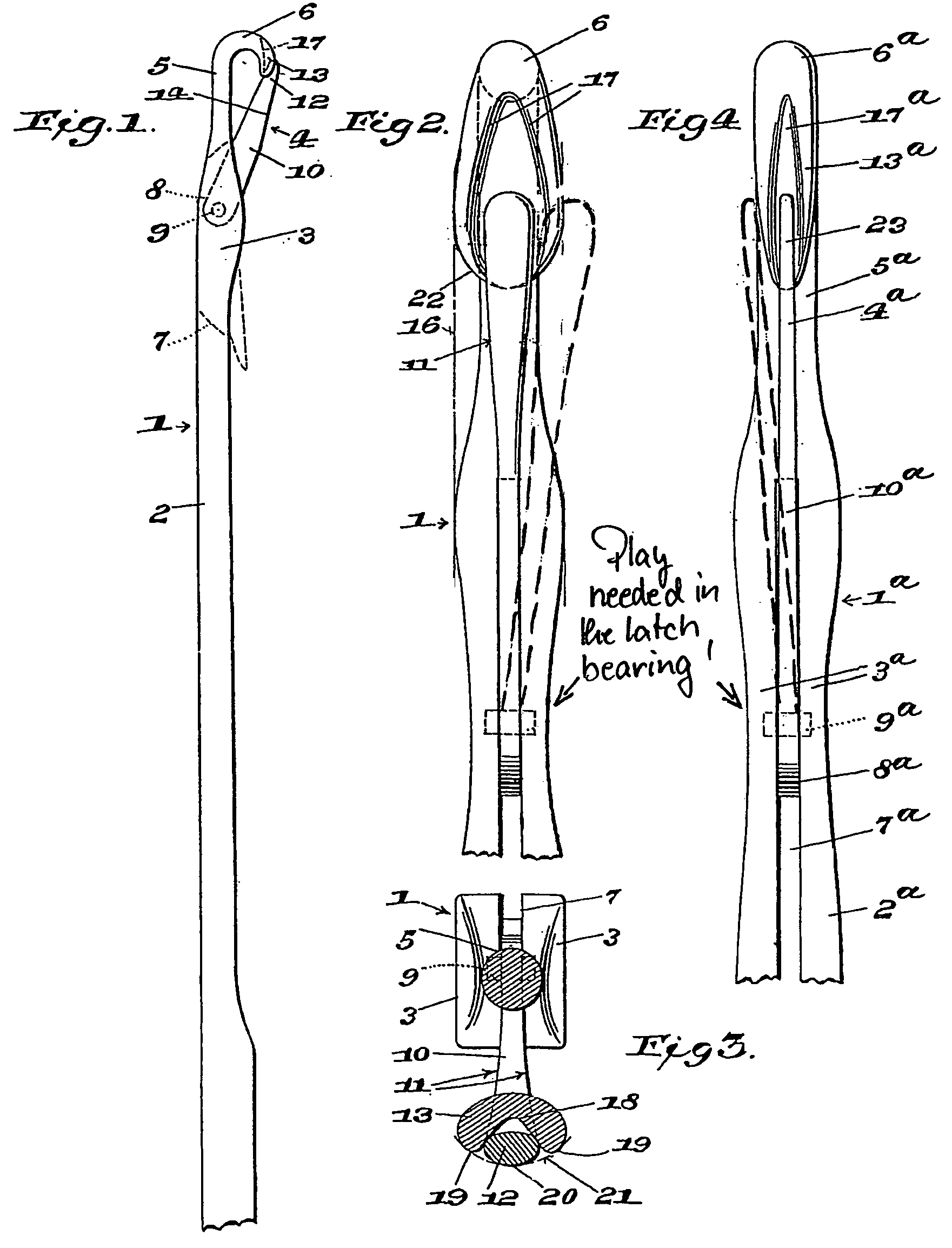Latch needle for a loop-forming textile
a technology of loop-forming machine and latch needle, which is applied in the field of latch needle for loop-forming machine, can solve the problems of affecting the casting process, and affecting the quality of the finished product, so as to reduce the risk of sharp edges in the region of the latch head, the effect of less prone to wear and minimizing potential wear
- Summary
- Abstract
- Description
- Claims
- Application Information
AI Technical Summary
Benefits of technology
Problems solved by technology
Method used
Image
Examples
Embodiment Construction
[0032]FIG. 1 shows a latch needle 1, which has a needle body 2 with a loop-forming part 3 having a hook 4 on its end. The hook 4 terminates in a tip 14.
[0033]On its loop-forming part 3, the needle body 2 has a latch slit 5, into which extends an end 15 of the latch 7. The latch 7 is held in the latch slit 5 on a bearing arrangement 6, so as to be pivotally supported. The bearing arrangement 6 consists of a bearing shaft extending through the latch slit 5, for example. This bearing shaft, which may be configured as a bearing pin or, preferably as a one-piece or multi-piece peg that is seamlessly connected with the needle body 2. The latch 7 is supported in such a manner such that it can be pivoted about this bearing arrangement 6 out of the closed position shown on the left side in FIG. 1 and into a rear position shown on the right side in FIG. 1. A hook inside space 10 is closed and opened, respectively, during the change from the closed position into the open position.
[0034]The lat...
PUM
 Login to View More
Login to View More Abstract
Description
Claims
Application Information
 Login to View More
Login to View More - Generate Ideas
- Intellectual Property
- Life Sciences
- Materials
- Tech Scout
- Unparalleled Data Quality
- Higher Quality Content
- 60% Fewer Hallucinations
Browse by: Latest US Patents, China's latest patents, Technical Efficacy Thesaurus, Application Domain, Technology Topic, Popular Technical Reports.
© 2025 PatSnap. All rights reserved.Legal|Privacy policy|Modern Slavery Act Transparency Statement|Sitemap|About US| Contact US: help@patsnap.com



